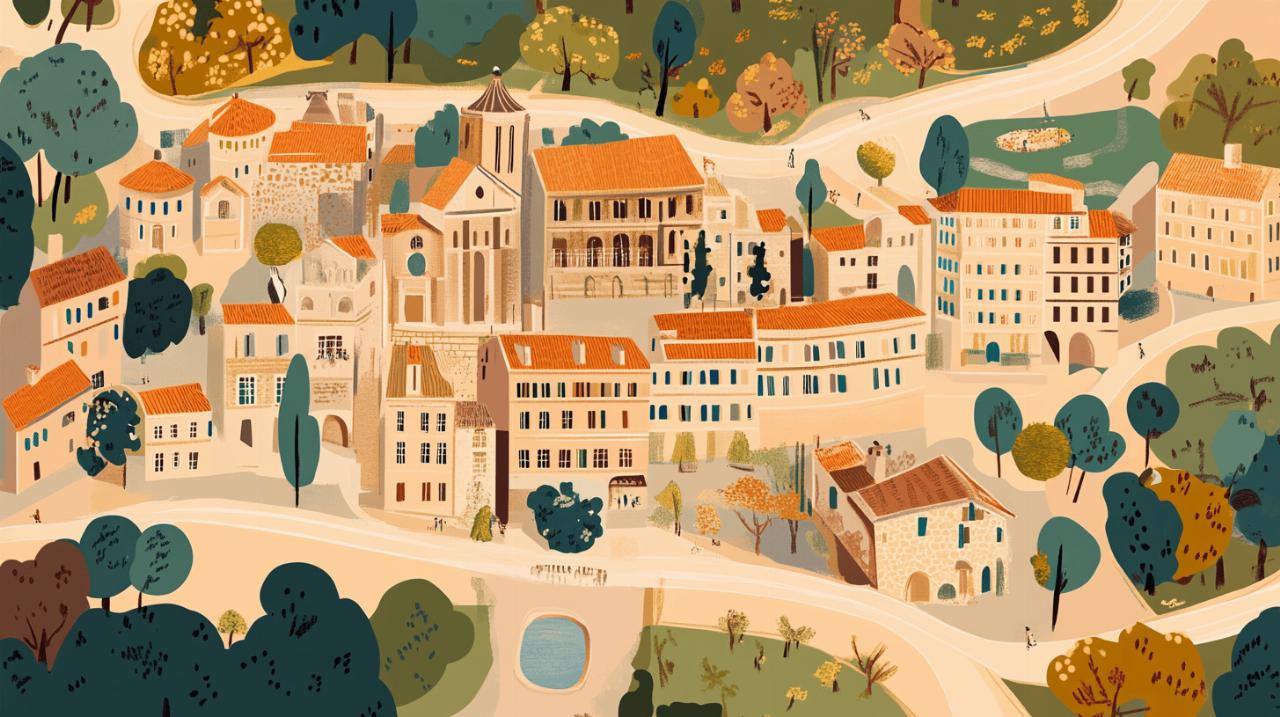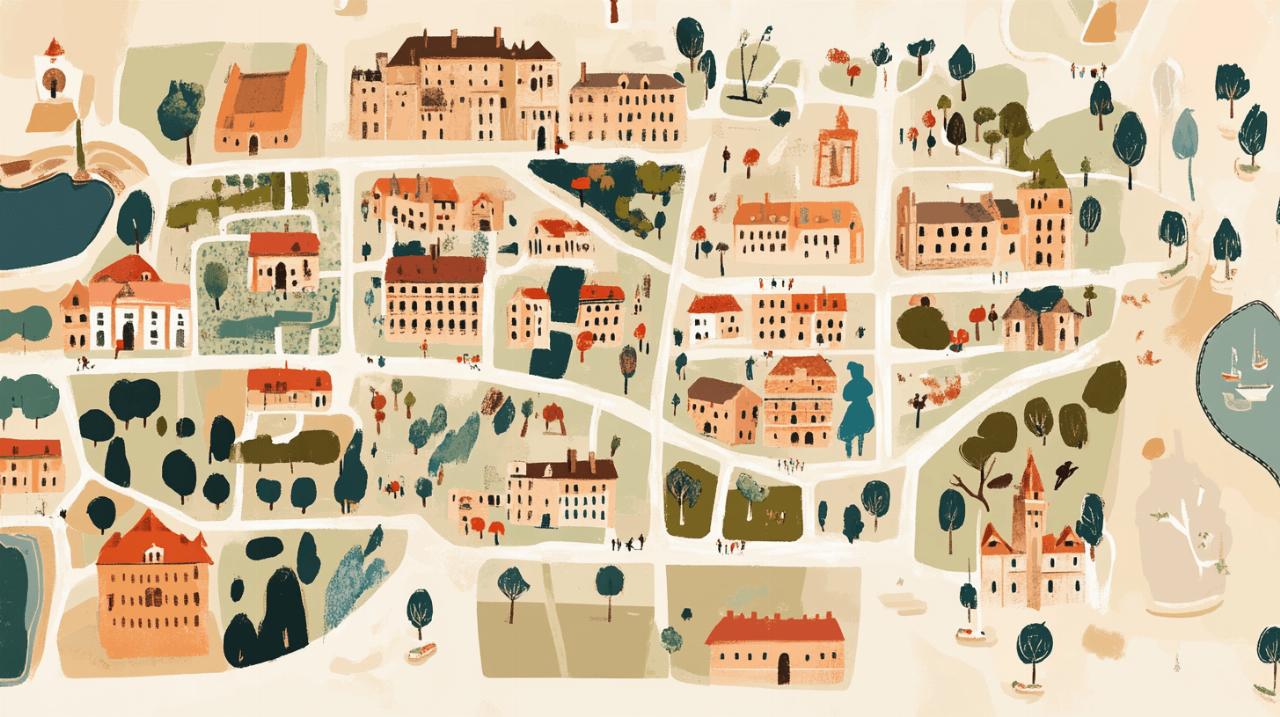Quartiers de Narbonne à Éviter: Safety Precautions and Understanding Cultural Integration in Diverse Communities
Narbonne is a ville that wears its history on its sleeve, a place where ancient Roman stones meet modern French living in the heart of the Aude department. For anyone contemplating a move or even just a visit, understanding the nuances of its various quartiers is essential. Like any town worth its salt, Narbonne has areas that shine brightly and others that might require a bit more caution or consideration. This guide aims to offer a balanced, honest look at the different neighbourhoods, touching on safety, cultural integration, and the overall quality of life you might expect in this historic corner of southern France.
Understanding Narbonne's Urban Landscape: A Balanced Overview of the Quartiers
Historical Context and the Character of Different Neighbourhoods
Narbonne's story stretches back to Roman times, and the layers of its past are visible in every cobblestone and archway. The ville was once a major port and a bustling centre of trade, and that historical richness has left an indelible mark on its character. As you wander through the town, you will notice that each quartier has developed its own personality, shaped by centuries of economic shifts, migration, and urban development. The centre, for instance, is a lively hub where history and commerce collide, with narrow streets lined with cafes, boutiques, and the occasional reminder of the town's Roman heritage. In contrast, some of the outlying areas have a more residential feel, where modern flats and houses sit alongside older architecture. Understanding this historical context helps to appreciate why certain neighbourhoods feel more vibrant or, conversely, more subdued. It is this blend of old and new that gives Narbonne its unique flavour, though it also means that not every area will suit every taste or lifestyle.
Navigating the Mix: Pricing, Property, and Localisation Across the Ville
When it comes to property, Narbonne offers a mixed bag. Prices can vary considerably depending on which quartier you are eyeing. Areas closer to the centre or with easy access to amenities tend to command higher prices, reflecting their desirability and convenience. On the other hand, neighbourhoods further out or those that have not yet benefited from significant regeneration might offer better value for money, though this often comes with trade-offs in terms of atmosphere or access to services. Le Bourg, for example, offers a different vibe compared to the bustling heart of the town, with its own charm and a quieter pace of life. The localisation of a property is crucial, not just for day-to-day convenience but also for long-term investment. Proximity to public transport, shops, and cultural sites can make a significant difference to your quality of life. The commerces around Narbonne are generally good, with a decent selection of markets and shops that cater to everyday needs, though some areas are better served than others. Before committing to a move, it is wise to spend time exploring different quartiers, getting a feel for the rhythm of each neighbourhood, and considering how well it aligns with your lifestyle and budget.
Safety Considerations and Practical Tips for Residents and Visitors
Keeping your wits about you: evening safety and town centre precautions
Safety is a concern that crops up in any discussion about relocating or visiting a new place, and Narbonne is no exception. The centre of the ville is generally bustling and well-frequented, especially during the day when locals and tourists alike fill the streets and cafes. However, as evening sets in, some areas can feel less welcoming, and it is sensible to keep your wits about you. Certain spots, particularly those that are less well-lit or quieter after dark, may require a bit more caution. It is not about being fearful but rather about being aware of your surroundings and taking basic precautions. Sticking to well-travelled streets, avoiding displaying valuables ostentatiously, and being mindful of your belongings are all practical steps that apply to any town. While Narbonne is not known for rampant crime, petty theft and opportunistic incidents can occur, especially in areas with high footfall or where tourists congregate. The key is to balance enjoying the vibrant atmosphere of the town with a healthy dose of street smarts.
Seaside vigilance: protecting your belongings near the plage
Narbonne's proximity to the Mediterranean coast is one of its most appealing features, and the plage is a draw for residents and visitors alike. Whether you are there for a leisurely afternoon or a full day of sunbathing, it is important to be mindful of your belongings. Beach areas, by their very nature, can be hotspots for theft, with bags and personal items sometimes left unattended while people take a dip or wander off to grab a bite. The best advice is to never leave valuables unguarded. If you are travelling in a group, make sure someone is always keeping an eye on your things, or consider using lockers if they are available. Avoid taking expensive electronics or large amounts of cash to the beach, and keep your phone and wallet on your person whenever possible. The plage should be a place of relaxation, and a bit of forethought can prevent a lovely day from being ruined by the loss of your possessions. The seaside environment can sometimes foster a false sense of security, so vigilance is key to ensuring your time by the water remains stress-free.
Cultural Integration and Quality of Life in Narbonne's Diverse Communities
Exploring Local Charm: From Le Bourg to the Robine Canal
 Narbonne is a ville that rewards those who take the time to explore beyond the obvious tourist traps. Le Bourg, for instance, offers a quieter, more residential atmosphere that contrasts with the hustle and bustle of the town centre. Walking along the Robine Canal is a delightful way to spend an afternoon, with tree-lined paths and historic bridges providing a serene backdrop for a leisurely stroll. This canal, which winds its way through the heart of the town, is a reminder of Narbonne's historique connections to trade and travel, and it remains a beloved feature for locals and visitors alike. The cultural fabric of Narbonne is woven from many threads, with diverse communities contributing to the town's character. This diversity can be seen in the local markets, the variety of restaurants and cafes, and the communal spaces where different cultures meet and mingle. For those willing to engage with this multicultural environment, Narbonne offers a rich and rewarding quality of life. It is a place where you can enjoy a traditional French café in the morning and sample cuisine from around the world in the evening. The key to successful integration is openness and a willingness to embrace the differences that make Narbonne such a vibrant and dynamic place to live.
Narbonne is a ville that rewards those who take the time to explore beyond the obvious tourist traps. Le Bourg, for instance, offers a quieter, more residential atmosphere that contrasts with the hustle and bustle of the town centre. Walking along the Robine Canal is a delightful way to spend an afternoon, with tree-lined paths and historic bridges providing a serene backdrop for a leisurely stroll. This canal, which winds its way through the heart of the town, is a reminder of Narbonne's historique connections to trade and travel, and it remains a beloved feature for locals and visitors alike. The cultural fabric of Narbonne is woven from many threads, with diverse communities contributing to the town's character. This diversity can be seen in the local markets, the variety of restaurants and cafes, and the communal spaces where different cultures meet and mingle. For those willing to engage with this multicultural environment, Narbonne offers a rich and rewarding quality of life. It is a place where you can enjoy a traditional French café in the morning and sample cuisine from around the world in the evening. The key to successful integration is openness and a willingness to embrace the differences that make Narbonne such a vibrant and dynamic place to live.
Urban Planning and the Plan Communal de Sauvegarde: How Local Councils Shape Community Feel
The plan communal de sauvegarde is a crucial element in understanding how Narbonne manages its urban environment and, by extension, the feel of its various quartiers. This plan, taken seriously by the local council, outlines measures for emergency preparedness and community safety, and it plays a significant role in shaping the day-to-day experience of living in the town. Urban planning decisions, from the layout of public spaces to the allocation of resources for regeneration projects, have a direct impact on the quality of life in different areas. Some quartiers have benefited from significant investment and thoughtful development, resulting in improved infrastructure, cleaner streets, and a more cohesive community feel. Others, however, may still be waiting for such attention, and this can affect everything from local amenities to the overall atmosphere. Lifestyle areas like Cadre de Vie are often the result of careful planning and a commitment to creating spaces where people want to live, work, and socialise. Understanding how local governance and urban planning intersect can help you appreciate why certain neighbourhoods feel more welcoming or vibrant than others, and it is an important factor to consider when choosing where to settle in Narbonne.
Making an Informed Decision: Choosing the Right Quartier for Your Lifestyle
Assessing Cadre de Vie and Public Transport Links Before You Move
Choosing the right quartier in Narbonne is not just about finding a pretty street or a charming square. It requires a careful assessment of the cadre de vie, or living environment, and how well it aligns with your personal needs and lifestyle. Public transport links, for instance, can make or break your daily routine, especially if you do not have a car or prefer not to rely on one. Narbonne's public transport network is reasonably well-developed, with buses connecting various parts of the town and the surrounding areas, but the convenience and frequency of these services can vary significantly depending on where you live. Proximity to schools, healthcare facilities, and shopping areas are other practical considerations that should not be overlooked. It is also worth thinking about the social aspects of the cadre de vie. Does the neighbourhood have a strong sense of community? Are there parks, sports facilities, or cultural centres that could enhance your quality of life? These are the questions that will help you move beyond the superficial and make a decision based on what truly matters to you and your family.
Doing your homework: exploring narbonne's unique vibes and finding your fit
At the end of the day, the best way to choose the right quartier is to do your homework and spend time exploring Narbonne's unique vibes. Each neighbourhood has its own character, its own rhythm, and its own set of advantages and drawbacks. Some might sound grim on paper but could surprise you with their hidden charm and sense of community. Others might look perfect at first glance but may not suit your lifestyle or preferences once you dig a bit deeper. Take the time to walk the streets at different times of day, chat with locals, and get a feel for the atmosphere. Visit the local markets, pop into the cafes, and see how you respond to the energy of the place. Many find Narbonne agreeable, with its lovely historique side and its blend of old-world charm and modern convenience, but what works for one person might not work for another. By investing time in exploring and understanding the different quartiers, you will be in a much better position to make an informed decision that you will be happy with for years to come.
